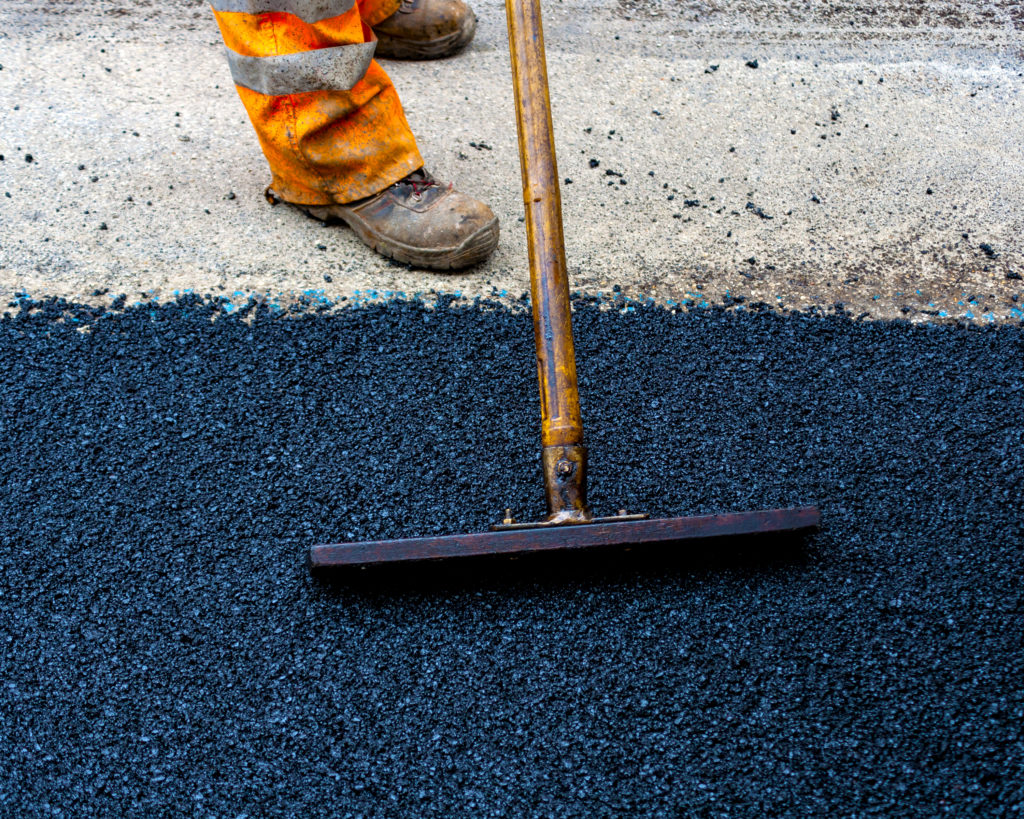Experience the Difference: Hot Mix Asphalt Paving for Regrading Projects
Experience the Difference: Hot Mix Asphalt Paving for Regrading Projects
Blog Article
Opening the Keys of Hot Mix Asphalt Modern Technology
Exploring the midsts of warm mix asphalt modern technology discovers a world where meticulous processes and exact formulas assemble to shape our roads and facilities. The combination of binders, accumulations, and fillers isn't merely a building and construction task yet a strategic orchestration of longevity and performance. As we peer into the elaborate dancing of components, a tapestry of durability and sustainability unravels. Yet what exists underneath this surface area of asphaltic mastery, and what secrets wait to be unveiled in the world of leading advancements?
Importance of Warm Mix Asphalt
Hot Mix Asphalt plays an essential duty in contemporary infrastructure advancement due to its longevity and cost-effectiveness. As the most commonly utilized leading material for roadways, highways, and car parking whole lots, Hot Mix Asphalt offers a variety of benefits that add to its significance in construction tasks. One essential benefit is its capability to withstand rush hour lots and severe climate conditions, giving a trustworthy and long-lasting surface for transport networks. Additionally, Warm Mix Asphalt is cost-efficient in both preliminary building and construction and lasting maintenance, making it a recommended option for numerous facilities tasks.
The longevity of Warm Mix Asphalt stems from its composition, which consists of accumulations, binder, and filler materials that are meticulously picked and mixed to meet certain performance requirements. On the whole, the value of Hot Mix Asphalt in framework advancement can not be understated, as it proceeds to be a foundation of modern building and construction methods.
Components of Asphalt Mixes
The composition of asphalt blends consists of thoroughly selected accumulations, binder, and filler products that are important for attaining particular efficiency needs. Aggregates are the main part of asphalt blends, offering toughness and stability. The binder, commonly bitumen or asphalt cement, holds the accumulations together and offers adaptability and resilience to the mix.
The mix and proportion of these elements play a considerable role in establishing the quality and efficiency of the asphalt mix. Designers very carefully design the mix to satisfy details demands, taking into consideration elements like website traffic quantity, climate conditions, and sidewalk life-span. Proper choice and harmonizing of accumulations, binder, and fillers are vital for producing resilient, durable asphalt pavements.
Combining and Manufacturing Techniques

When the aggregates are selected, the binder, commonly asphalt concrete, is contributed to bind the products with each other. The binder's quality and quantity considerably affect the mix's toughness, resistance, and adaptability to ecological aspects. Furthermore, fillers like hydrated lime or Portland cement may be incorporated to boost details features of the asphalt mix, such as its workability or dampness resistance.
Throughout manufacturing, the aggregates and binder are heated, generally between 250-325 ° F(121-163 ° C ), to facilitate blending and make certain correct finish of the accumulations. The mixing pop over here process must be thorough to attain an uniform blend that promotes the desired efficiency attributes of the asphalt. Different methods, such as batch blending or drum blending, are utilized to achieve regular and high-grade asphalt mixes for construction tasks.
Aspects Impacting Asphalt Performance
Aspects influencing asphalt performance incorporate a variety of variables that impact the longevity, durability, and overall quality of asphalt sidewalks. One essential factor is the top quality of products used in the asphalt mix. The type and resource of aggregates, the binder quality, and the ingredients all play a substantial function in identifying the efficiency of the asphalt pavement. The rank of aggregates is essential as it affects the mix's resistance, workability, and security to rutting and breaking.

Ecological problems also affect asphalt performance. Temperature variants, moisture seepage, and traffic lots can all affect the structural honesty of the pavement. Design factors to consider, such as pavement density and drainage, are necessary in guaranteeing the lasting performance of the asphalt pavement. By meticulously considering these service providers, elements and designers can maximize asphalt efficiency and boost the solution life of sidewalks.
Sustainable Practices in Asphalt Innovation

WMA enables for the production and positioning of asphalt mixes at reduced temperatures contrasted to standard hot-mix asphalt, resulting in minimized power usage and greenhouse gas emissions. The usage of porous asphalt blends can assist mitigate stormwater overflow issues by enabling water to infiltrate via the pavement and right into the ground, promoting natural water purification and recharge procedures.
Conclusion
Finally, warm mix asphalt technology plays a critical role in modern facilities advancement this hyperlink because of its durability and cost-effectiveness. By thoroughly balancing elements, utilizing correct blending strategies, and taking into consideration numerous aspects, designers can produce high-grade asphalt blends that hold up against hefty website traffic tons and severe weather. Accepting sustainable techniques, such as making use of warm-mix technologies and recycled products, better boosts the ecological kindness of asphalt innovation.
Blending and production techniques in hot mix asphalt modern technology entail the exact combination and processing of accumulations, binder, and fillers to develop a long lasting and high-performance asphalt mix.Elements influencing asphalt efficiency incorporate a variety of variables that impact the resilience, longevity, and total high quality of asphalt pavements. Lasting techniques in asphalt innovation encompass numerous efforts aimed at lowering the environmental impact of asphalt manufacturing and paving processes. By incorporating redeemed asphalt pavement (RAP) and recycled asphalt shingles (RAS) right into new asphalt blends, the industry can significantly lower the usage of raw materials and power, while also reducing landfill waste.
WMA permits for the production and positioning of asphalt mixes at reduced temperatures contrasted to standard hot-mix asphalt, resulting in reduced power consumption and greenhouse gas discharges.
Report this page